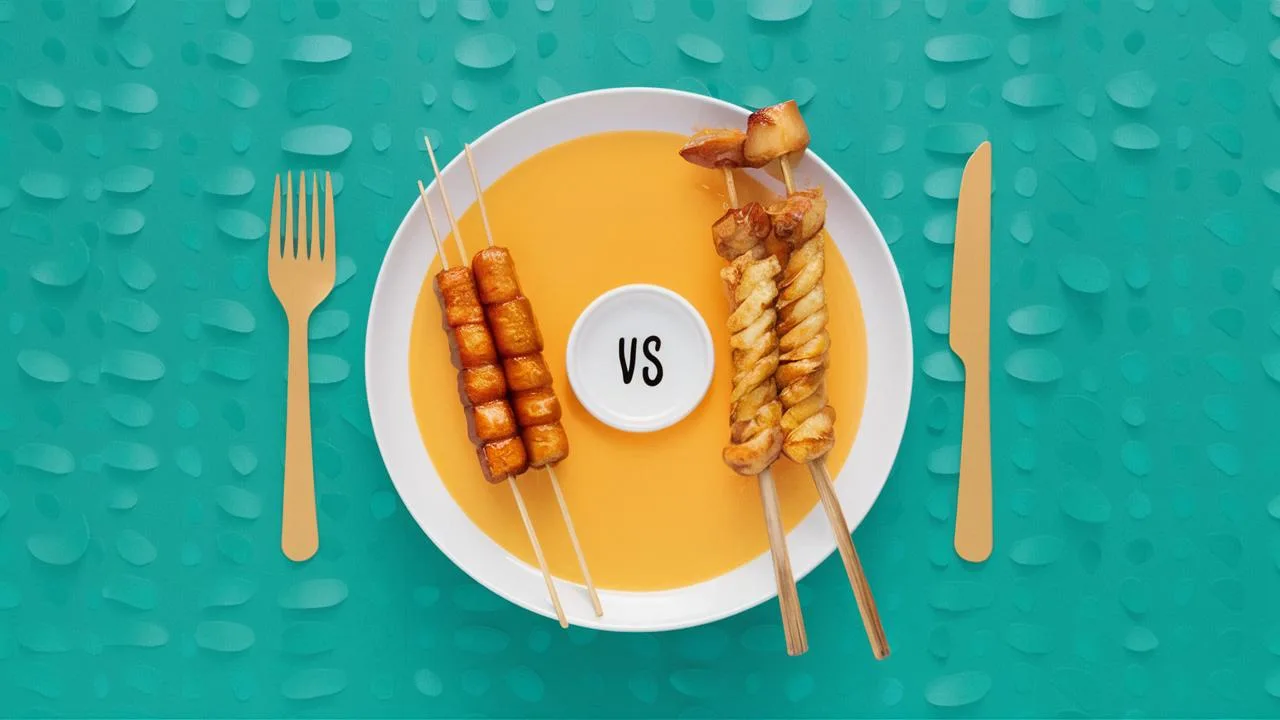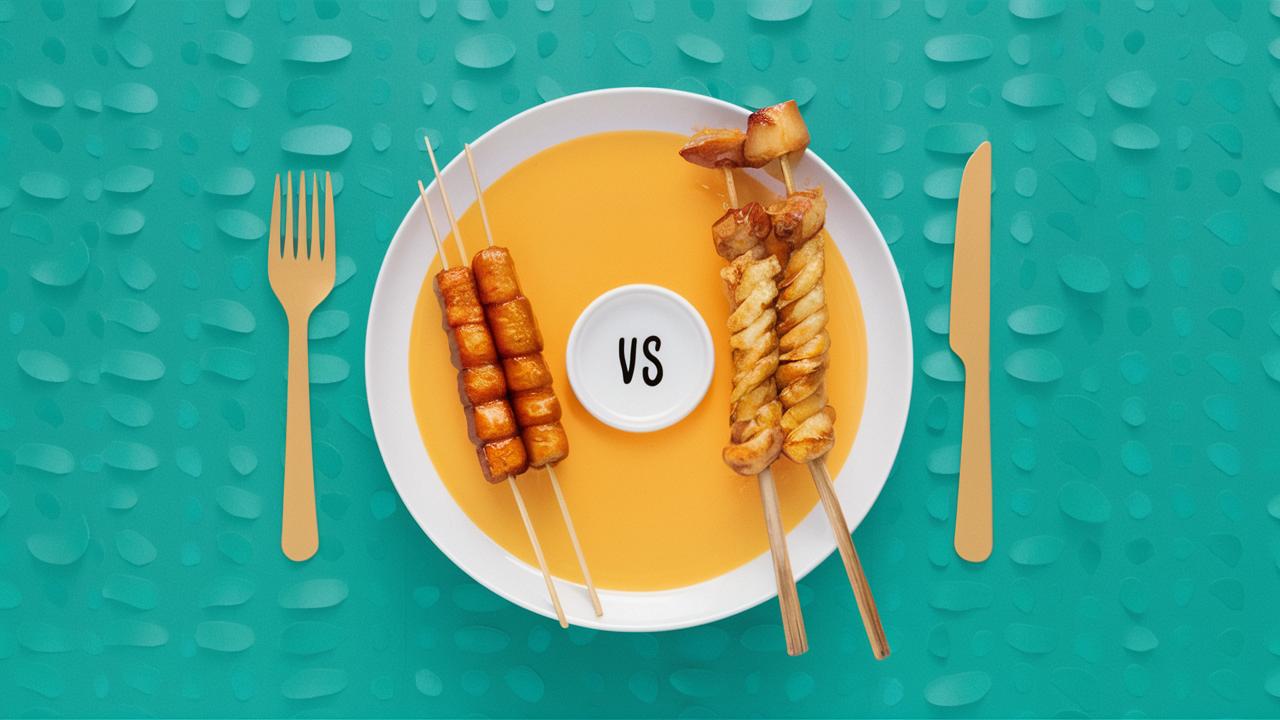Why do some Singaporeans prefer satay over satay bee hoon?
Introduction
Welcome to Singapore, where the food is as colorful as its cultural tapestry! known for its culinary wonders, the Lion City is no stranger to flavorful debates. today, we’re diving deep into the scrumptious world of Satay and Satay Bee hoon – two dishes that ignite passionate discussions among Singaporeans. Whether you’re a seasoned foodie or just a curious eater, this guide will tantalize your taste buds and tickle your funny bone. So grab a plate, or better yet, two!
What Exactly is Satay?
In a nutshell, satay is a Southeast asian game-changer in the world of skewers. Originating from Indonesia but wholeheartedly adopted by Singaporeans, satay consists of marinated meat – typically chicken, beef, or mutton – grilled to perfection over a charcoal fire. Imagine the juiciest, moast flavorful meat you’ve ever had, and you’re halfway there.But wait! Satay isn’t complete without its sidekicks: a rich, nutty peanut sauce, a serving of ketupat (rice cakes), and slices of cucumber and onion to cleanse your palate.
Satay’s Charming Cousin: Satay Bee Hoon
And then we have satay bee hoon – the less-famous but equally tantalizing cousin of satay. This dish cleverly marries vermicelli noodles and spicy peanut sauce with a medley of ingredients: blood cockles, cuttlefish, thinly sliced kangkung (water spinach), and tofu puffs. Each bite delivers a symphony of flavors and textures that harmonize beautifully. It’s a noodle dish that wears a peanut sauce robe, promising a unique and unforgettable dining experience.
History of Satay and Satay Bee Hoon
The Ancient Roots of Satay
Though Indonesia claims the origins of satay, Singaporeans have embraced it as a national treasure. In the early 19th century, satay was introduced by Javanese and Sumatran immigrants, quickly becoming a street food staple. Today, every hawker center in Singapore boasts satay stalls that draw in hungry crowds with their smoky aromas.
The Evolution of Satay Bee Hoon
Satay bee hoon, on the other hand, has more of a local flair. Emerging in Singapore during the 20th century, it represents a fusion of Chinese culinary techniques and Malay flavors. With its unique blend of ingredients, satay bee hoon became a beloved comfort food showcasing the diversity and creativity of Singaporean cuisine.
The Flavor Showdown: Satay vs. Satay Bee Hoon
satay: A Taste of Tradition
- Texture: The meat’s exterior boasts a caramelized char, while its interior remains juicy and tender.
- Flavor: Each skewer bursts with smoky,sweet,and savory notes,further enhanced by the nutty peanut dip.
- Experience: A hands-on delight that encourages sharing, satay is social eating at its best.
Satay Bee Hoon: A Noodly Nirvana
- Texture: A medley of soft vermicelli mingles with crunchy vegetables and tender seafood.
- Flavor: The nutty and spicy peanut sauce blankets the noodles, creating an explosive taste sensation.
- Experience: Dive into a comforting bowl that surprises with each bite, perfect for solo indulgence.
The Cultural Meaning of Satay and Satay Bee Hoon
Singapore is a melting pot of cultures, and the love for satay and satay bee hoon reflects this. These dishes symbolize unity and diversity, bringing together people from various backgrounds to enjoy the simple yet profound pleasures of food.They are often featured at family gatherings, festivals, and national celebrations, cementing their place in Singapore’s cultural and culinary landscape.
The Eternal Debate: Choosing Between Satay and Satay Bee Hoon
Ah, the million-dollar question: which is better, satay or satay bee hoon? Well, it depends on whom you ask! For some, the choice is a matter of nostalgia, harking back to childhood memories of family gatherings imbued with the scent of grilling satay. Others may prefer satay bee hoon’s comforting warmth on a cool day.
The truth is, most Singaporeans would gleefully enjoy both dishes without needing to pick a favorite. After all, why choose when you can have both?
Where to Find the Best Satay and Satay Bee Hoon in Singapore
Top Satay Spots
- east Coast Lagoon Food Village – where the satay legends hang out.
- Lau Pa Sat Festival Market – nothing better than having satay under the stars.
- Chomp Chomp Food Centre – for the satay that’s nothing short of chomptastic!
Renowned Satay Bee Hoon Places
- Serangoon Garden Market & Food Centre – famed for their generous sauce and fresh ingredients.
- Sin Chew Satay Bee Hoon at Alexandra Village Food Centre – a long-time favorite for locals in-the-know.
- East Coast Lagoon Food Village – get your satay bee hoon fix by the seaside breeze.
Conclusion
The Satay vs. Satay Bee Hoon debate is less about division and more about celebrating an irreplaceable part of singaporean identity. Whether you’re indulging in succulent skewers or slurping rich noodles, both dishes provide warmth, flavor, and a taste of the island’s cultural essence. So, here’s to the vibrant food culture of Singapore – grab a fork, or a skewer, and dig in!


